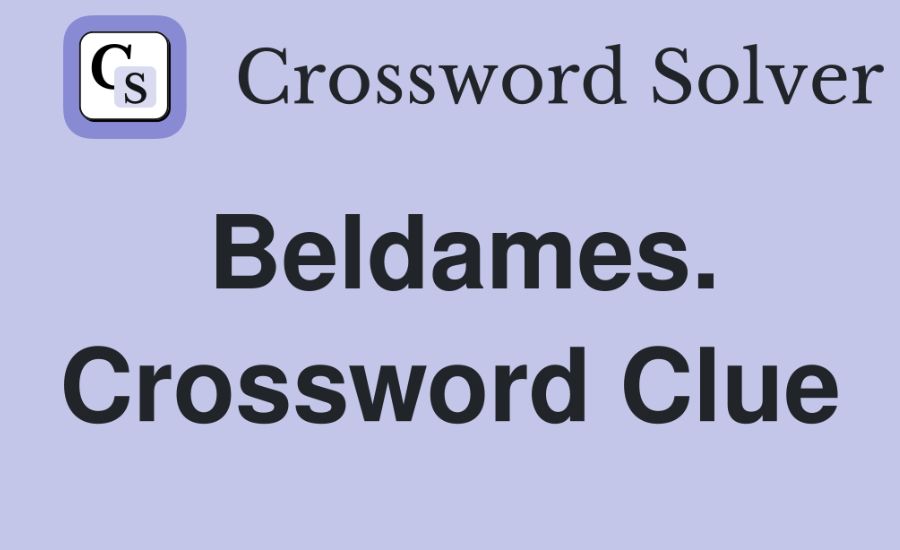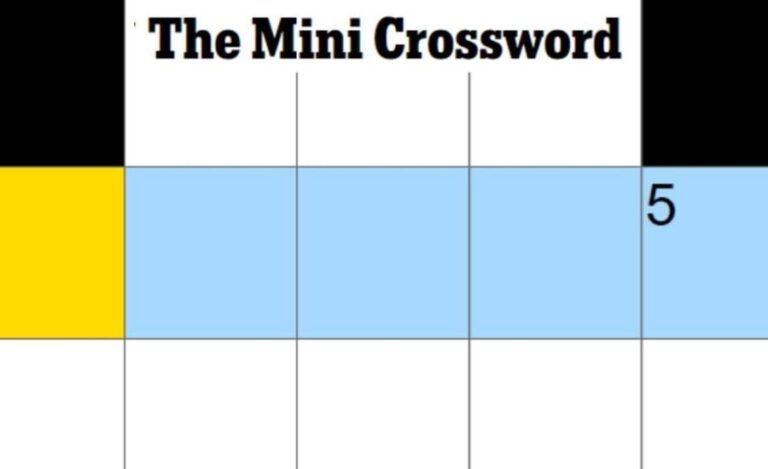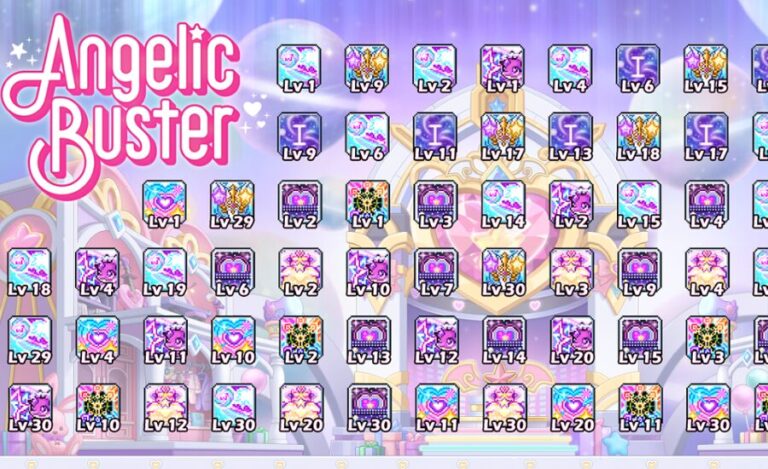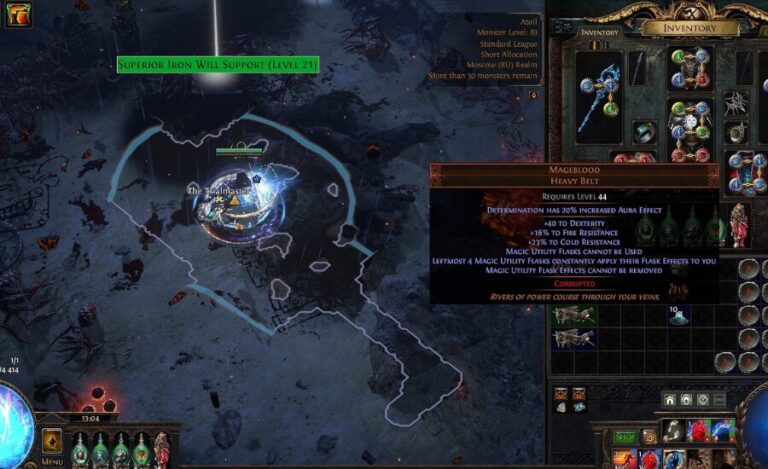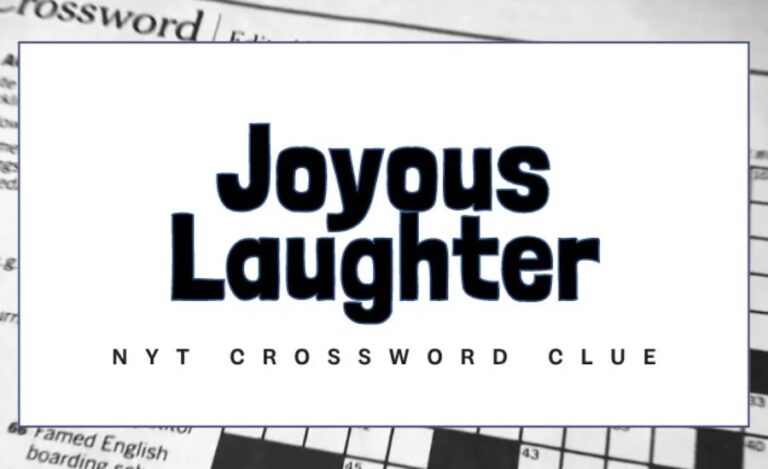Beldames Nyt Etymology, Classic Literature, & More
Introduction
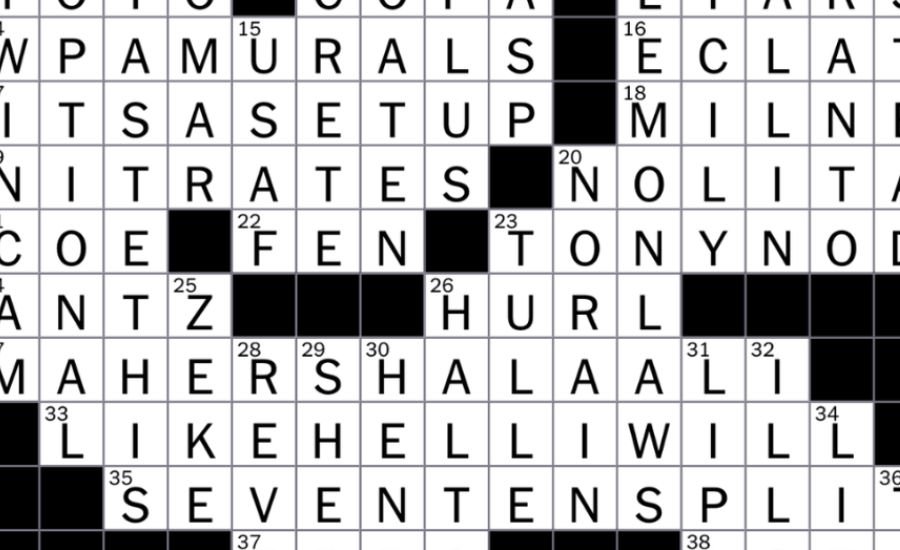
Crossword puzzles are not only a trial of jargon; they are likewise an excursion through the rich embroidery of language, history, and culture. One charming term that sometimes shows up in the New York Times (NYT) crossword puzzles is “beldames.” While this word may not be essential for ordinary jargon, it conveys huge authentic and abstract weight. In this article, we’ll investigate the importance of “beldames,” its verifiable and scholarly settings, and its job in crossword puzzles, offering a far reaching comprehension of this entrancing term.
Introduction to Beldames in NYT Crossword Clues
The expression “beldames” is a remnant of a past period, its underlying foundations covered profound inside the Center French language. Despite the fact that its utilization has essentially dwindled in contemporary language, “beldames” actually finds a spot in writing and sometimes in crossword puzzles. For the people who experience this word in a riddle, understanding its subtleties can upgrade the settling experience and give a more profound enthusiasm for the term’s verifiable and social importance.
Defining Beldames: Origins and Etymology
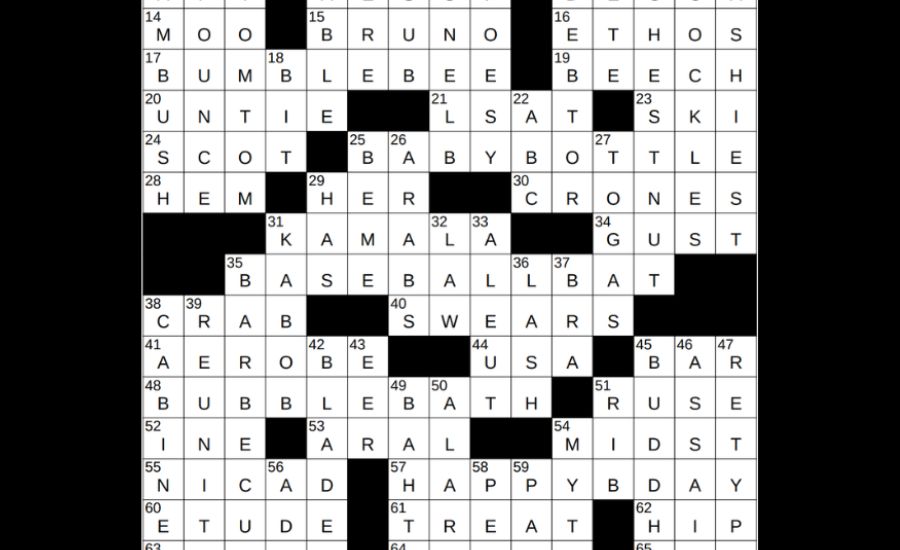
“Beldames” is gotten from the Center French term “beldam,” which initially signified “grandma” or “elderly person.” Over the long run, in any case, the importance of “beldame” moved, taking on a more pessimistic undertone. Rather than essentially alluding to an old lady, the term started to depict ladies who were viewed as rough, witch-like, or malicious. This development in significance reflects more extensive cultural perspectives toward maturing and the changing view of more established ladies across various authentic periods.
Historical Context of Beldames
Ever, “beldames” were frequently connected with enchanted or powerful qualities. This affiliation is characteristic of when more established ladies, particularly the individuals who lived alone or rehearsed conventional medication, were seen with doubt. In specific verifiable periods, these ladies were dreaded, at times venerated, and frequently connected to black magic or other extraordinary peculiarities.
This doubt was not restricted to normal people; it penetrated all degrees of society. The social perspectives of the past towards more established ladies were perplexing, molded by a combination of dread, respect, and misconstruing. The witch chases of the sixteenth and seventeenth hundreds of years, for instance, are an obvious indication of how society’s perspective on more seasoned ladies could take a risky and destructive turn.
Beldames in Literature: A Cultural and Historical Lens
Writing offers a window into the social and verifiable impression of “beldames.” These characters are many times portrayed as shrewd yet fearsome figures, typifying the double idea of regard and dread that society held towards older ladies.
Examples in Classic Literature
In exemplary writing, “beldame” shows up in different settings to summon secret, astuteness, or dread. William Shakespeare, for example, involved the term in his plays to portray more established ladies who had both information and a specific vindictiveness. The witches in “Macbeth” are a great representation; they encapsulate characteristics frequently connected with “beldames”: they are shrewd in the ways of the world, yet their insight is combined with a disrupting power that conjures dread.
The “beldame” in exemplary writing isn’t only an elderly person however an image of something substantially more significant — she addresses the feelings of trepidation and vulnerabilities that accompany age and information, especially when that information is of a mysterious or extraordinary nature.
Modern Literary Usage
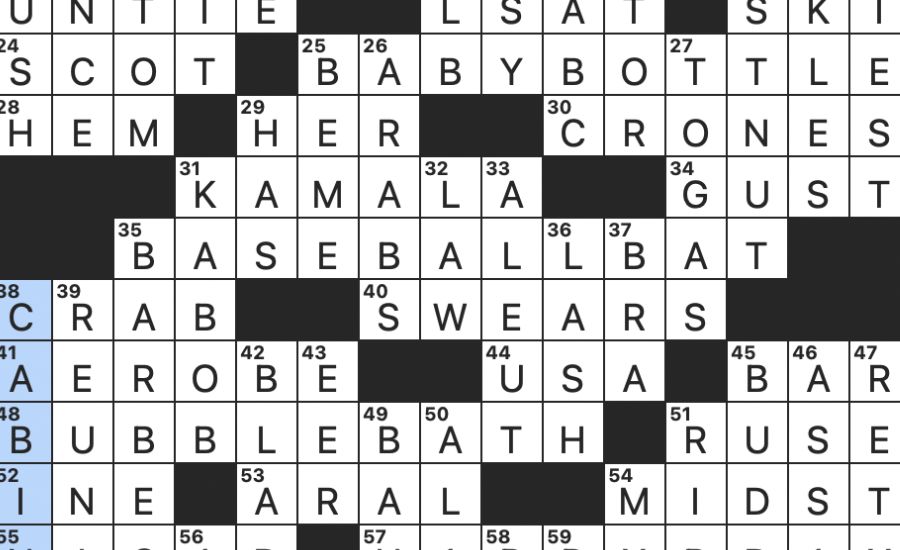
In contemporary writing, the expression “beldames” is once in a while resuscitated to take advantage of its rich verifiable meanings. Current creators might utilize the term to bring out a feeling of olden times or to remark on the complicated connection between age, shrewdness, and power. These advanced translations frequently try to adjust regard for the insight of more established ladies with an affirmation of the trepidation and odd notion that have generally encircled them.
For instance, in present day dream writing, “beldames” might be depicted as strong authorities who, notwithstanding their fearsome appearance, are wellsprings of antiquated shrewdness and direction. This nuanced depiction helps overcome any issues between the verifiable view of “beldames” as witch-like figures and the cutting edge comprehension of them as encapsulations of information and experience.
Beldames in Crosswords: A Challenging Clue
In the domain of crossword puzzles, “beldames” fills in as an entrancing sign that provokes solvers to draw in with both their verifiable information and jargon abilities. Crossword constructors frequently utilize such terms to add a layer of trouble to their riddles, empowering solvers to think past the most well-known words and dive into the more dark corners of the language.
Typical Crossword Clues Involving Beldames
Crossword signs including “beldames” commonly reference subjects of black magic, advanced age, or otherworldly characteristics. A few instances of signs could include:
“Old expression for witchy more established ladies”
“Elderly people ladies of legend”
“Older ladies in fables”
Addressing these signs expects solvers to think about equivalent words and related terms that fit the riddle’s specific circumstance. The key is to ponder words related with advanced age, otherworldliness, and verifiable references. Perceiving the social and artistic meaning of “beldames” can likewise give important clues while handling such signs.
Cultural Significance of Beldames in the NYT Crossword
The social meaning of the expression “beldames” reaches out a long ways past its word reference definition. It reflects well established authentic mentalities towards maturing, orientation jobs, and supernatural quality. Understanding this social foundation offers solvers and perusers a more extravagant viewpoint on how society has seen and addressed more seasoned ladies from the beginning of time.
Depictions in Art and Folklore
In workmanship and old stories, “beldames” are in many cases portrayed as savvy however fearsome figures. These depictions feature the duality of regard and dread that has generally encircled more seasoned ladies. In certain societies, “beldames” are loved as shrewd ladies with profound information on spices and recuperating, while in others, they are dreaded as witches who have risky, heavenly abilities.
These portrayals are not just results of creative mind; they are established in the genuine apprehensions and tensions of the social orders that delivered them. The picture of the “beldame” as a the figure line among great and wickedness, shrewdness and malignance, mirrors the complex and frequently disconnected manners by which more established ladies have been seen through time.
Modern Interpretations and Reclamation of the Term
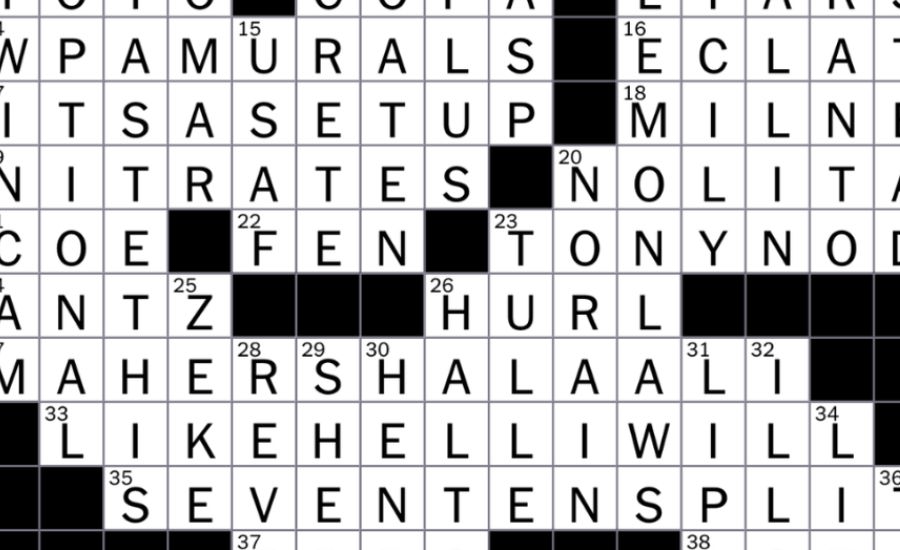
In current times, while the expression “beldames” is seldom utilized, its heritage perseveres in conversations about the depiction of more seasoned ladies in media and writing. Contemporary translations frequently look to recover or rethink such terms, zeroing in on the insight and experience of more established ladies as opposed to the apprehension and odd notion of the past.
This change in context plans to offer a more certain and nuanced perspective on maturing. Rather than being viewed as fatigued or witch-like, more established ladies are progressively depicted as wellsprings of information, power, and motivation. The cutting edge recovery of “beldames” is essential for a more extensive development to challenge ageist and chauvinist generalizations and to commend the commitments of more seasoned ladies to society.
Synonyms and Related Terms
In crossword perplexes, the way to tackling a hint frequently lies in thinking about equivalent words or related terms. For “beldames,” potential equivalents could include:
Witch: A term that, similar to “beldame,” can be utilized to portray an elderly person from a disparaging perspective, frequently inferring witch-like characteristics. “Witch” is a three-letter word, making it a typical response in crosswords.
Hag: One more word with comparable implications, “hag” is frequently used to portray an elderly person in fables or folklore. This five-letter word is additionally often tracked down in crosswords.
Understanding these equivalent words and their unobtrusive contrasts can enormously improve a crossword solver’s capacity to disentangle pieces of information that reference “beldames.
Common Solutions for the Clue “Beldames”
Given the definition, there are a couple of normal responses that solvers could go over while handling the hint “Beldames” in a crossword puzzle. These arrangements are in many cases short and fit flawlessly into the framework, pursuing them famous decisions for crossword constructors.
1. Hag (3 Letters)
“Witch” is maybe the most well-known and direct answer for the sign “Beldame.” A “witch” is characterized as an elderly person who is much of the time depicted as a witch or a hag in fables and writing. The three-letter length makes it a successive response in crosswords, where space is much of the time restricted.
2. Crone (5 Letters)
Another normal arrangement is “hag,” a five-letter word that likewise alludes to an elderly person, especially one who is shriveled and frequently connected with perniciousness or black magic. Like “witch,” “hag” conveys an unfortunate underlying meaning and is utilized to portray a lady who is presently not young or appealing.
3. Crones (6 Letters)
In plural structure, “hags” may be the response when the sign “Beldames” explicitly alludes to more than one old lady. This answer has been noted in different crossword puzzles, incorporating those highlighted in legitimate distributions like The New York Times.
The Cultural and Historical Context of “Beldames”
To see the value in “beldame” and its utilization in crossword puzzles, it assists with investigating the social and authentic setting from which it emerges completely. The depiction of older ladies as witches or hags has profound roots in Western legends and writing. In numerous conventional stories, the “beldame” is a figure of dread or secret, frequently connected with black magic or dull powers.
Folklore and Mythology

In European fables, the figure of the “witch” or “hag” frequently shows up as a shrewd lady, a witch, or a main bad guy. These characters are commonly portrayed as being old, terrible, and having information on the little known. “Beldame” itself summons pictures of such figures, building up the generalization of the old lady as a figure to be dreaded or kept away from.
Literary References
Writing from the archaic period ahead is loaded with references to beldames, witches, and hags. Shakespeare, for instance, regularly utilized such characters to exemplify components of risk or fiendishness, as found in the witches of “Macbeth.” The scholarly practice has solidified the “beldame” as a staple person type, which thusly impacts how the word is utilized in crossword puzzles.
Modern Perception
Today, the utilization of words like “beldame,” “witch,” and “hag” might be viewed as obsolete or even hostile. The depiction of old ladies as ugly or malignant reflects cultural mentalities that have moved altogether in ongoing many years. Nonetheless, these terms continue in puzzles because of their authentic importance and their utility in developing testing crossword signs.
Tips for Solving Clues Like “Beldames”
Settling crossword signs like “Beldames” requires a blend of jargon information, social mindfulness, and puzzle-tackling techniques. Here are a few hints to assist you approach comparable signs with certainty:
1. Brush Up on Archaic Vocabulary
Numerous crossword puzzles, particularly those from notable distributions, utilize old fashioned or more uncommon jargon. Really getting to know more established or less habitually utilized words can give you an edge while tackling.
2. Consider the Context
Crossword signs are frequently intended to be interesting. They might utilize words with twofold implications or depend on more subtle definitions. At the point when you experience a word like “beldame,” consider every conceivable understanding and how they could fit inside the riddle.
3. Look at the Length of the Answer
The length of the response is a significant hint in itself. Assuming that you know the length of the word you’re searching for, it can assist with reducing the potential outcomes. For instance, on the off chance that the sign is “Beldame” and the response is three letters in length, “witch” is major areas of strength for a.
4. Use a Crossword Solver
In the event that you’re stuck, feel free to a crossword solver device. These apparatuses permit you to include the letters you have and the length of the word to produce potential responses. For the hint “Beldames,” you could enter something like “5 letters, beginning with C” to get “hag.”
5. Practice Regularly
Like any ability, crossword addressing improves with training. The more riddles you complete, the more comfortable you’ll become with normal signs and their answers. This commonality will make it simpler to perceive examples and ponder how words fit together.
Why Crossword Puzzles Continue to Captivate
Crossword puzzles have kept up with their prominence for such a long time since they offer a special mix of challenge, diversion, and learning. Whether you’re a carefully prepared solver or new to the universe of crosswords, there’s continuously something to find. The sign “Beldames” is only one illustration of how language, history, and culture converge in the realm of riddles.
Mental Exercise
Crosswords are a superb method for keeping your cerebrum sharp. They expect you to think basically, review data, and make associations between apparently irrelevant ideas. This psychological activity can further develop memory, jargon, and critical thinking abilities.
A Sense of Accomplishment
Finishing a crossword puzzle gives a feeling of achievement. Each hint settled is a little triumph, and completing a whole riddle is a fantastic accomplishment. This sensation of achievement can be especially remunerating while settling interesting hints like “Beldames.”
A Community of Solvers
Crossword confuses likewise cultivate a feeling of local area. Many individuals appreciate chipping away at puzzles with companions or family, while others partake in web-based discussions and gatherings where they can share tips and arrangements. Talking about troublesome pieces of information, similar to those including old words, can prompt new kinships and shared growth opportunities.
Facts
- Definition and Origin:
- “Beldames” originates from the Middle French term “beldam,” meaning “grandmother” or “old woman.” It evolved to describe older women perceived as rough, witch-like, or malevolent.
- Literary Usage:
- In literature, “beldames” are often depicted as wise yet fearsome figures, reflecting society’s complex views on aging and the knowledge of older women. Shakespeare, for example, used the term to describe characters with a blend of wisdom and malevolence.
- Historical Context:
- Historically, “beldames” were associated with witchcraft and the supernatural, especially during periods like the witch hunts of the 16th and 17th centuries.
- Crossword Puzzle Usage:
- In crossword puzzles, “beldames” serves as a challenging clue that may reference themes of witchcraft, old age, or supernatural qualities. Common crossword solutions include words like “hag” or “crone.”
- Cultural Significance:
- The term reflects deep-seated historical attitudes towards aging, gender roles, and the supernatural, offering solvers a richer perspective on how society has viewed older women over time.
- Modern Interpretations:
- In contemporary contexts, there is a shift towards reclaiming and reinterpreting terms like “beldames,” focusing on the wisdom and experience of older women rather than fear and superstition.
Summary
The article “Beldames in NYT Crossword Clues: Meaning and Context” explores the term “beldames,” focusing on its significance in New York Times (NYT) crossword puzzles. It delves into the word’s origins, tracing it back to Middle French where it originally meant “grandmother” or “old woman.” Over time, the term took on a more negative connotation, often used to describe older women with witch-like or malevolent characteristics. The article discusses how “beldames” are portrayed in literature, where they are frequently depicted as wise yet fearsome figures, embodying both respect and fear. It also covers the cultural and historical context of the term, noting its association with witchcraft and the supernatural, as well as its use in crossword puzzles as a challenging clue. The article emphasizes the importance of understanding such terms to enhance one’s crossword-solving skills and appreciation for the rich tapestry of language, history, and culture.
FAQs
- What does the term “beldames” mean?
- “Beldames” originally meant “grandmother” or “old woman” in Middle French, but it has evolved to describe older women who are seen as rough, witch-like, or malevolent.
- Why does “beldames” appear in NYT crossword puzzles?
- “Beldames” appears in NYT crossword puzzles as a challenging clue, often referencing themes of witchcraft, old age, or supernatural qualities.
- How is “beldames” used in literature?
- In literature, “beldames” are often depicted as wise but fearsome figures, embodying the complex societal views on aging and knowledge, especially in older women.
- What are common crossword solutions for the clue “beldames”?
- Common crossword solutions include “hag” (3 letters), “crone” (5 letters), and “crones” (6 letters), all of which refer to old women, often with negative connotations.
- What is the historical significance of “beldames”?
- Historically, “beldames” were associated with witchcraft and the supernatural, reflecting societal fears and superstitions surrounding older women, especially those who lived alone or practiced traditional medicine.
- How has the perception of “beldames” changed in modern times?
- In modern times, there is a shift towards reclaiming the term “beldames,” focusing on the wisdom and experience of older women rather than the fear and superstition of the past.
Read More Information About Game At latestrular
